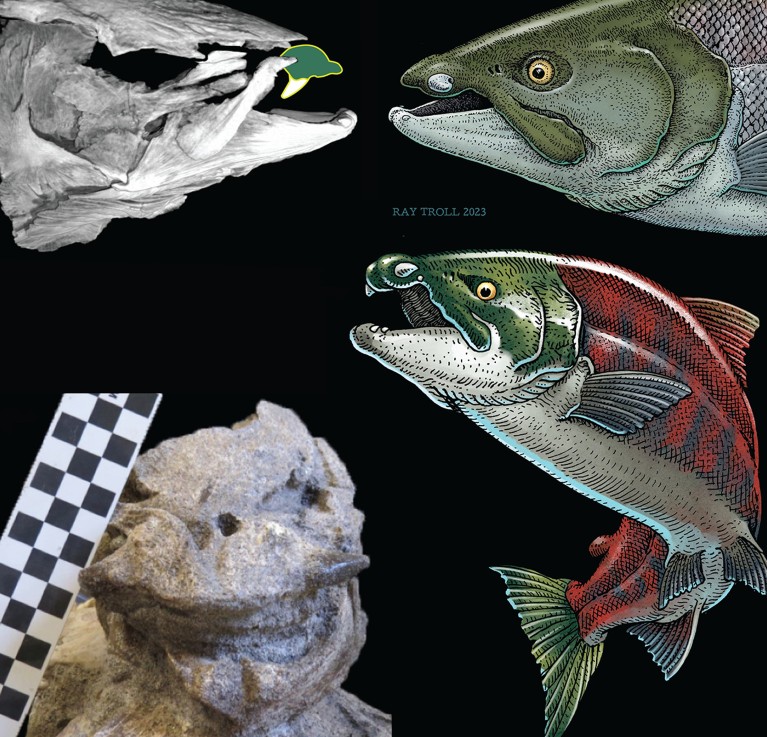- RESEARCH HIGHLIGHT
This giant extinct salmon had tusks like a warthog

The now-extinct salmon species Oncorhynchus rastrosus had ‘tusks’ protruding from its snout (right top and bottom, artist’s illustration; top left, scan of skull with illustration of the originally proposed position of the teeth; bottom left, skull). Credit: K. M. Claeson et al./PLoS One (CC-BY 4.0)
Access options
Access Nature and 54 other Nature Portfolio journals
Get Nature+, our best-value online-access subscription
$29.99 / 30 days
cancel any time
Subscribe to this journal
Receive 51 print issues and online access
$199.00 per year
only $3.90 per issue
Rent or buy this article
Prices vary by article type
from$1.95
to$39.95
Prices may be subject to local taxes which are calculated during checkout
Nature 629, 11 (2024)
doi: https://doi.org/10.1038/d41586-024-01146-w
References
Claeson, K. M., Sidlauskas, B. L., Troll, R., Prescott, Z. M. & Davis, B. E. PLoS ONE 19, e0300252 (2024).



